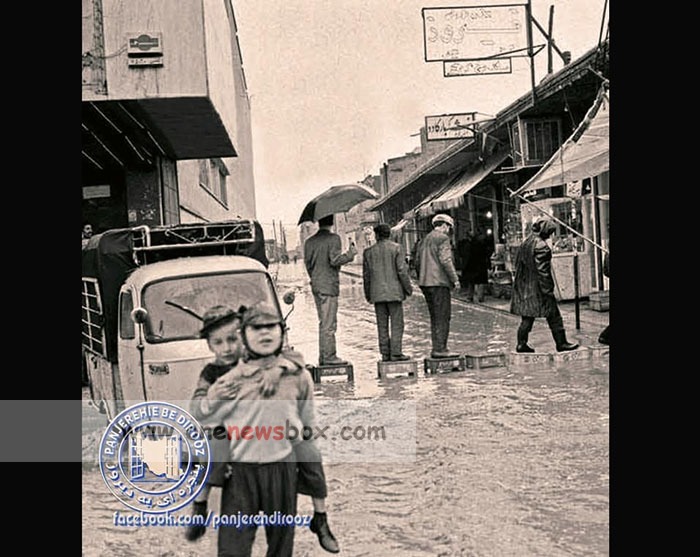Fifty-six years ago, on January 10, 1968, the capital of Iran, Tehran, was struck by a natural disaster that caused widespread damage in several key areas of the city. The heavy rain on that day led to severe flooding and landslides, affecting neighborhoods near the Finance Palace, Sur-e-Srafil, in front of the National Bank (Nasser Khosrow Branch), and the Darupakhsh Pharmaceutical Company. This event not only left a lasting impact on the city’s infrastructure but also highlighted the vulnerability of urban planning in Tehran, which, at the time, was grappling with rapid modernization and expansion.
The Climate and the Storm
Tehran, historically located in a region prone to varying weather patterns, has often witnessed extreme weather events. The 1968 storm, however, was one of the most memorable in the city’s modern history. The rainfall on January 10 was intense and relentless, lasting for hours, which led to a rapid accumulation of water on the streets. While Tehran had faced floods before, the scale and intensity of this particular downpour were unprecedented for that time.
During the 1960s, Tehran was transitioning from a more traditional, smaller city to a modern metropolis. The rapid urbanization that accompanied this transition led to various challenges, including inadequate drainage systems. This lack of sufficient infrastructure made the city more susceptible to natural disasters like floods. The heavy rains overwhelmed the city’s drainage systems, causing significant water accumulation in the streets and, in some cases, landslides due to the saturation of the soil on the surrounding hillsides.

